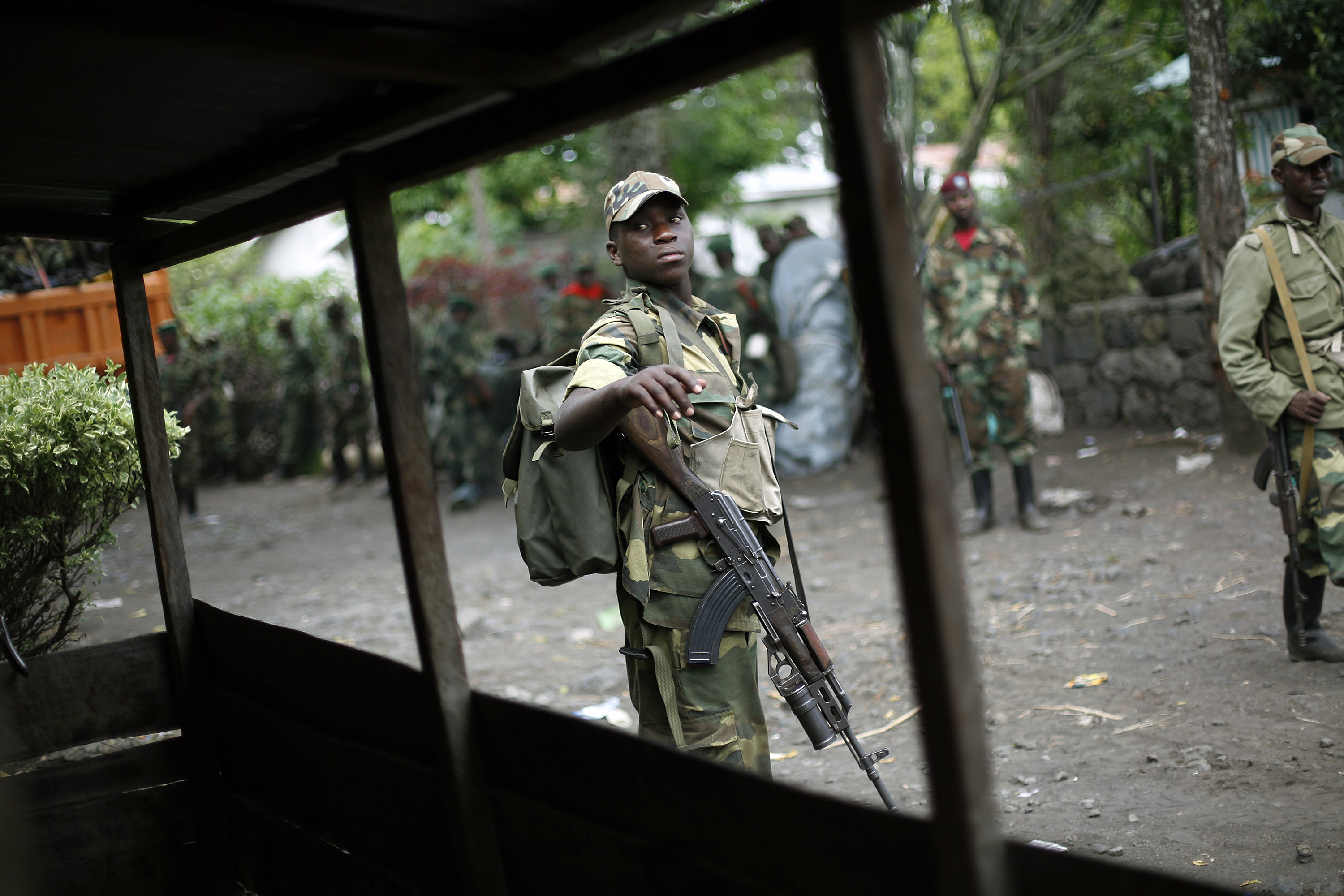
On January 17, the Congolese military began conducting military operations in northeastern Beni territory, in North Kivu province, against one of its oldest and least understood armed rebel groups: the Allied Democratic Forces – National Army for the Liberation of Uganda, or ADF-NALU. Formed in 1995 to resist Ugandan President Yoweri Museveni and to establish an Islamic state in Uganda, its leader is now Jamil Mukulu, who faces international sanctions. The ADF-NALU is based in the hills between eastern Congo and Uganda and has successfully infiltrated local economic and security networks. With an estimated force of 1200 to 1500 fighters, the ADF-NALU is resilient, highly organized, and increasingly active in conducting attacks that directly threaten civilians and peace efforts in eastern Congo.
The Congolese army had first announced its intent to lead counter-ADF-NALU “Sokola” operations in late December, but operations had been delayed following the assassination of a key Congolese military leader, Col. Mamadou Ndala, who was instrumental in the defeat of the M23 rebel group. The Congolese army is positioned to command counter-ADF-NALU operations while MONUSCO, the United Nations peacekeeping mission in Congo, provides logistical and tactical support. As of the writing of this post, neither major fighting nor casualties have been reported, but the rebels are said to be fleeing north toward Orientale province.
In 2013, the ADF-NALU had become increasingly active, sharply expanding kidnapping campaigns, attacking public schools, U.N. peacekeepers and large towns. On December 9, the group was reportedly redeploying in anticipation of the Congolese army’s operations. A week later, the U.N. discovered 21 civilians, including women and children, had been slaughtered in a suspected ADF-NALU attack. On December 25, ADF-NALU rebels attacked the town of Kamango, northeast of Beni, leaving more than 50 people dead.
As ADF-NALU rebels move north and potentially increase their activities, and as counter-ADF-NALU military operations take shape, we review several resources with insights on the motives, interests, regional ties, and history of the ADF-NALU.
On January 28, the U.N. Group of Experts released its report for 2013 (an earlier leak is here), finding that the ADF-NALU had grown in strength and led increasingly brazen attacks on local people, humanitarian workers, and U.N. peacekeepers. Foreign Arabic speakers of unknown origin conducted military training with the group, which also expanded its territorial range and has dispersed fighters to smaller bases in anticipation of U.N. operations. An ADF-NALU attack on Kamango in July and displaced some 66,000 people into Uganda enabling, rebels to use the cleared area for military operations. The attack was the largest of several on medical facilities that resulted in the looting of medical supplies, suggesting the group anticipates an upsurge in armed clashes.
On January 27, Integrated Regional Information Networks, or IRIN, published a new briefing on ADF-NALU, providing additional figures from civil society groups on ADF-NALU abductions and recruitment in 2013. The IRIN briefing also assessed rumored ADF-NALU connections to Islamic groups and citizens of neighboring countries, including Tanzania and Somalia, as well as the group’s intelligence capabilities, military skill, and ability to cross borders and blend with state and non-state actors.
An African Defense Review interview with freelance journalist Caroline Hellyer, and Congolese journalist Ley Uwera’s interview with scholar and book author Jason Stearns, both in January 2014, reviewed military operations against the ADF-NALU and assessed the group’s strength and tactical capabilities. In December 2013, Christoph Vogel of the University of Zurich published a comprehensive map, showing the locations of ADF-NALU in eastern Congo as of October 2013, though operations in January 2014 have since caused these positions to shift. [To compare the approximate areas controlled by ADF-NALU over time, consult older maps from International Crisis Group (p. 15) and Oxfam (p. 26).] In December 2013, Stephanie Wolters of the Institute for Security Studies commented on the ADF-NALU for Good Governance Africa in an article that provides a political history of the group and reviews its connections to former leaders of Congo, Sudan, and Uganda.
In late November 2013, Reuters published excerpts of an internal study on ADF-NALU by MONUSCO that argued for military intervention against the group. The report noted a “sharp expansion in the number of kidnappings,” and an “intense” military training program that had created a force that “has never hesitated to fire on MONUSCO.” In mid-October 2013, IRIN News reported on the ADF-NALU’s alleged links with Islamic militants and discussions about options for ADF-NALU amnesty. Earlier, in August, Fidel Bafilemba and I published an overview, analyzing the group’s origins, interests, strengths, and both amicable and hostile interactions with other armed groups, and spheres of influence.
A 2012 International Crisis Group report, and scholarship by Kristof Titeca and Koen Vlassenroot and Lindsay Scorgie have provided excellent historical context and discussion of the influences of Islam, socio-economic factors, and regional and transnational border dynamics on the ADF-NALU. Scorgie discussed her research in an Al Jazeera article, elaborating further on ADF-NALU's alleged relationships to Al-Shabaab, its socio-economic integration in the region, and the limited effectiveness of earlier military operations against the group.
The U.N. Group of Experts on the Democratic Republic of Congo has tracked ADF-NALU activities and provided regular in-depth reports. Prior to the January 2014 report on ADF-NALU activities in 2013 (S/2014/42), the group published a report in July 2013 (S/2013/433, Paras. 90-96; Annex 41, 49), November 2012 (S/2012/843, Paras. 104-111), June 2012 (S/2012/348; Paras. 15-21, Annex 3,5-6), December 2011 (S/2011/738, Paras. 18, 37, 39-65, 658; Annex 4-6, 9), June 2011 (S/2011/345, Paras. 28-29; Annex III), November 2010 (S/2010/596, Paras. 2, 19, 29, 108-112, 121, 171, 241, 288, 307; Annex 11), November 2009 (S/2009/603, recruitment table below Para. 317, Paras. 336, 373), December 2008 (S/2008/773, Para. 69, Annex 31), and July 2007 (S/2007/423, Paras. 102-105)
The reports reviewed are not comprehensive,and do not necessarily reflect the Enough Project's views on the ADF-NALU.

